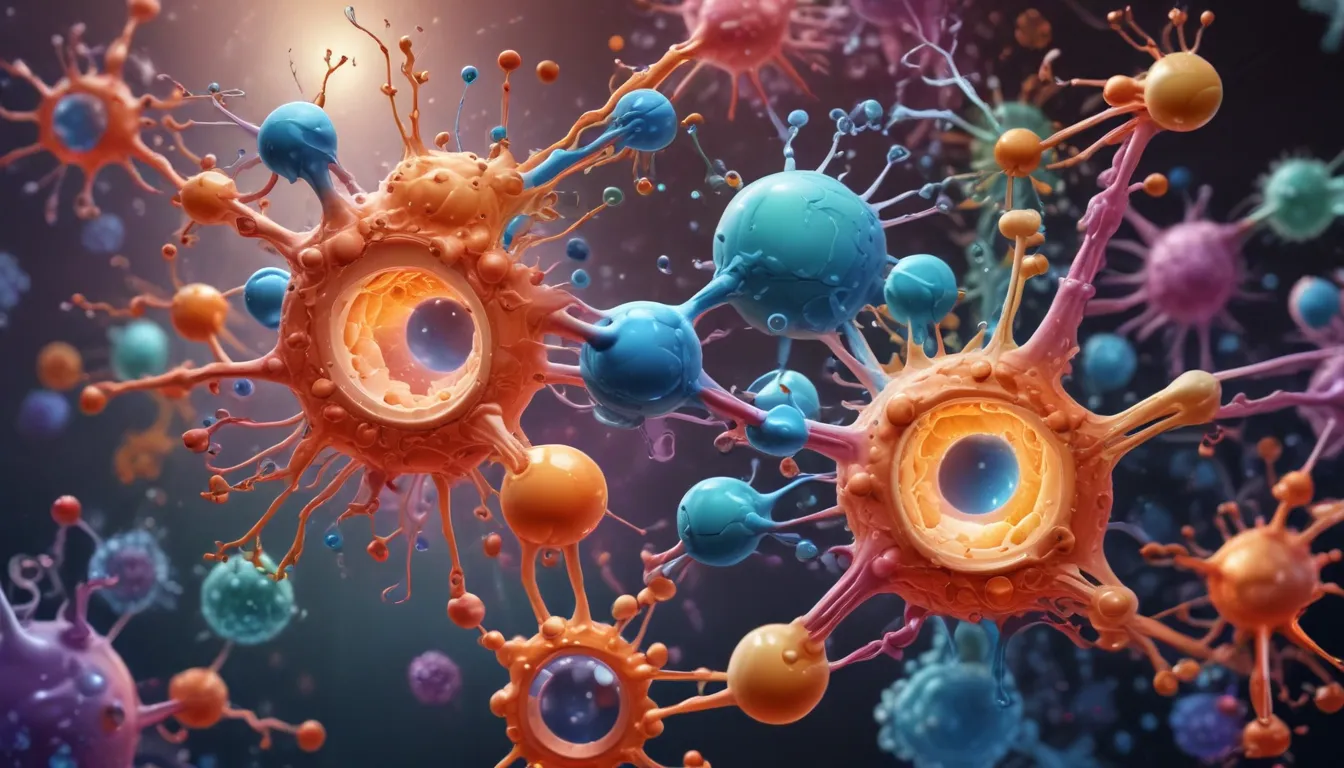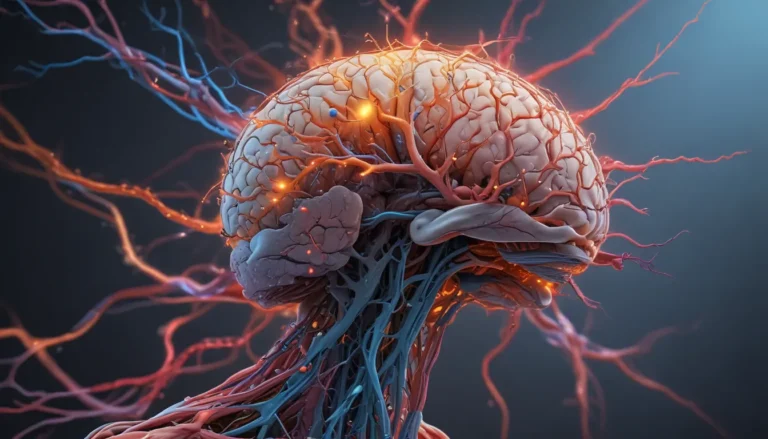A Note About Images: The images used in our articles are for illustration purposes only and may not exactly match the content. They are meant to engage readers, but the text should be relied upon for accurate information.
Welcome to the fascinating world of biology, where complex theories and principles illuminate the intricate mechanisms of life. Among the many groundbreaking theories in this field stands the chemiosmotic theory, proposed by Peter Mitchell in the 1960s. This theory has revolutionized our understanding of cellular energy production, shedding light on the mechanisms behind the generation of ATP, the energy currency of life.
In this article, we will delve into 13 surprising facts about the chemiosmotic theory, unlocking its secrets and unraveling the mysteries of cellular energy production. By exploring these facts, you will not only deepen your knowledge but also gain a profound appreciation for the marvels of biological processes. Let’s embark on this journey and discover the wonders of chemiosmotic theory together!
Key Takeaways:
- The Chemiosmotic Theory explains how cells make energy by moving ions, leading to the discovery of ATP synthase and revolutionizing our understanding of cellular energy production.
- This theory has implications in various fields, from drug development to bioenergetics, and continues to inspire ongoing research, showcasing the ingenuity of scientific discoveries.
Understanding the Chemiosmotic Theory:
The Chemiosmotic Theory, proposed by Peter Mitchell in 1961, provides a groundbreaking explanation for how cells generate energy through the movement of ions across cell membranes. This theory has fundamentally changed our perspective on cellular energy production, offering insights into the intricate mechanisms that drive life-sustaining processes.
Exploring ATP Synthase:
One of the key outcomes of the Chemiosmotic Theory is the discovery of ATP synthase, an essential enzyme responsible for the synthesis of ATP, the vital energy molecule in cells. This enzyme plays a crucial role in converting the proton gradient generated during cellular respiration into ATP, powering various cellular processes.
Unraveling ATP Production in Mitochondria:
According to the Chemiosmotic Theory, ATP synthesis occurs in the mitochondria through a process known as oxidative phosphorylation. This process involves the flow of electrons and protons across the inner mitochondrial membrane, culminating in the production of ATP. By understanding this intricate mechanism, we gain valuable insights into how cells harness energy for survival.
Shedding Light on the Electron Transport Chain:
The Chemiosmotic Theory elucidates the role of the electron transport chain in cellular respiration. This chain of protein complexes facilitates the transfer of electrons, creating a proton gradient that drives ATP synthesis. Through this process, cells efficiently convert energy from nutrients into ATP, fueling essential biological functions.
Connecting Chemiosmotic Theory to Photosynthesis:
The insights provided by the Chemiosmotic Theory extend to photosynthesis, where the movement of electrons and protons across thylakoid membranes generates ATP and NADPH, crucial energy molecules for plant growth. By understanding the parallel mechanisms in photosynthesis and cellular respiration, we gain a comprehensive view of energy production in living organisms.
Emphasizing the Proton Motive Force:
Central to the Chemiosmotic Theory is the concept of the proton motive force, which drives the synthesis of ATP by creating an electrochemical gradient of protons across cell membranes. This force plays a pivotal role in energy generation, highlighting the intricate interplay between ions and cellular processes.
Implications of Chemiosmotic Theory in Drug Development:
The mechanisms elucidated by the Chemiosmotic Theory have significant implications in drug development, particularly in targeting ATP synthase for therapeutic purposes. By understanding how cells produce energy, researchers can explore innovative treatments for diseases linked to energy production, opening new avenues for medical advancement.
Uncovering Energy Generation in Bacteria:
Some bacteria utilize chemiosmosis to generate energy in anaerobic conditions, using alternative electron acceptors to complete the electron transport chain. This adaptation showcases the versatility of cellular energy production mechanisms and highlights the diverse strategies employed by living organisms to thrive in different environments.
Paving the Way for Bioenergetics Research:
The Chemiosmotic Theory has laid a solid foundation for research in bioenergetics, providing a framework for studying the fundamental processes of energy generation and utilization in living organisms. By building upon the principles of chemiosmosis, scientists can unravel the complexities of cellular metabolism and energy conversion, opening new frontiers in biological research.
Inspiring Discoveries Across Scientific Disciplines:
From cellular biology to biochemistry, from medicine to microbiology, the implications of the Chemiosmotic Theory span a wide range of scientific disciplines. This theory continues to inspire researchers across diverse fields, driving exploration and innovation in understanding the intricacies of cellular energy production. Its enduring impact serves as a testament to the power of scientific inquiry and the relentless pursuit of knowledge.
Delving Deeper into the Wonders of Chemiosmotic Theory:
As we reflect on the profound implications of the Chemiosmotic Theory, we are reminded of the intricate web of processes that govern life at the molecular level. By unraveling the mysteries of how cells generate energy, we gain a deeper appreciation for the complexity and elegance of biological systems. The journey into chemiosmotic theory opens new horizons for exploration and discovery, fueling our curiosity and inspiring us to uncover the hidden secrets of the natural world.
FAQs:
Q: What is the chemiosmotic theory?
A: The chemiosmotic theory explains how cells generate ATP by utilizing a proton gradient across a membrane.
Q: Who proposed the chemiosmotic theory?
A: The chemiosmotic theory was proposed by British biochemist Peter Mitchell in 1961.
Q: How does the chemiosmotic theory work?
A: According to the chemiosmotic theory, cellular energy is produced by the movement of protons across a membrane through ATP synthase, resulting in the synthesis of ATP.
Q: What are the implications of the chemiosmotic theory?
A: The chemiosmotic theory has implications in various fields, including bioenergetics, biotechnology, and medicine. It provides insights into cellular respiration, photosynthesis, and ATP synthesis, paving the way for advancements in drug development and biofuel production.
Q: Is the chemiosmotic theory widely accepted?
A: Yes, the chemiosmotic theory is widely accepted and has been extensively validated through experimental evidence.
Q: Can the chemiosmotic theory be applied to other biological processes?
A: Yes, the chemiosmotic theory has been successfully applied to other processes such as photosynthesis, oxidative phosphorylation, and ion transport across membranes in various organisms.
Unlocking the Secrets of Cellular Energy Production:
Embark on a journey of discovery as you unravel the mysteries of chemiosmotic theory and explore the intricate processes that power life itself. By understanding the mechanisms behind ATP synthesis, electron transport chains, and proton gradients, you gain valuable insights into the fundamental processes that sustain living organisms. Let the wonders of biology inspire you to delve deeper into the realms of science, curiosity, and discovery. As you continue on your scientific quest, remember that the world of biology is full of surprises, waiting to be uncovered and explored. Happy exploring!






